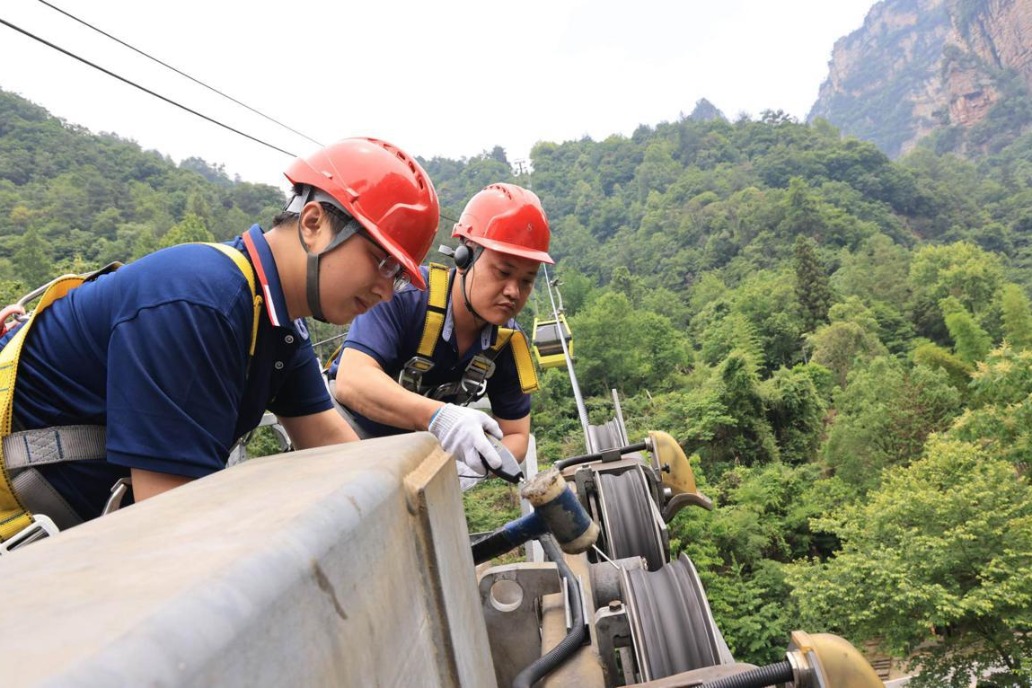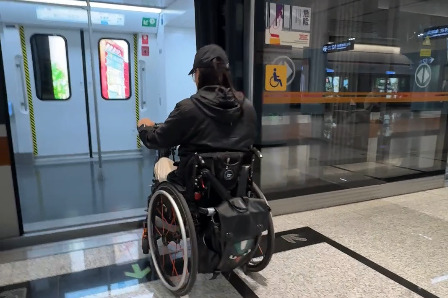Robots ease load, boost hospital safety





From disinfecting areas to carrying supplies and waste, high-tech helpers report for duty
Since China sounded the alarm to combat the novel coronavirus nationwide, robot maker Shanghai TMiRob Technology has delivered 42 intelligent disinfection robots to more than half a dozen hospitals in Wuhan, Hubei province, where most cases of the deadly virus have been reported.
In fact, the company's inventory has been exhausted, said Pan Jing, the CEO and founder of TmiRob.
"Even the robot model demonstrated in the exhibition hall of our company has been purchased and delivered," he said.
According to TMiRob, the robots can move on their own and disinfect areas frequented by patients and medical workers. Since they operate automatically, the exposure of people in the hospital environment is minimized.
"The disinfection robot has proved to be applicable in various scenarios in hospitals, including observation rooms, fever clinics and wards," said Pan. "At present, this model has been used in 60 hospitals in China, among which 14 are based in Shanghai. On top of that, another 70 Chinese hospitals are using other robot models produced by us."
At the same time, automatic mobile disinfection robots made by Shanghai Lingzhi Technology Co are being used in hospitals in Wuhan and Shanghai to fight the coronavirus.
The company's general manager, Zhang Kejun, said the disinfectant-releasing robot can navigate autonomously, freeing people from having to disinfect high-risk areas. A robot can carry a maximum of 1,500 milliliters of disinfectant, an amount that allows for three hours of nonstop work.
In addition, two robots that transport medical and daily supplies at Guangdong Provincial People's Hospital are believed to be the first robots deployed in quarantine wards.
One robot moves medicine and food, while the other transports medical waste and contaminated items. A robot can work six to eight hours after charging for about 20 minutes and can go to the charging point by itself when its power is low.
Luo Xiaodan, deputy director of the hospital's infectious diseases department, said the robots, which were donated by a technology company, arrived at the hospital on Jan 28 and were put to use after two days of test runs.
Luo's department screens for suspected cases of the coronavirus and is responsible for collecting highly detailed information on patients' latest movements and behavior and providing medical treatment if necessary. The department's doctors and nurses have had a heavy workload since the coronavirus outbreak, said Luo.
The newly introduced robots not only reduce the risks of infection, but can save medical workers from having to frequently put on and take off protective gear, including clothing, mask, goggles and boots-a procedure that can take an hour, said Luo.
The robots also help reduce the number of protective outfits needed, which is important because the supply of such protective gear is being strained nationwide.
Meanwhile, the market value of the world's medical robot industry is expected to reach $11.4 billion by the end of 2020, according to global market research company Boston Consulting Group.
AskCI Consulting Co has calculated that the market value of China's medical robots industry reached $600 million in 2019 and that the number will top $1 billion by 2021.
Apart from the substantial role that robots play in combating the coronavirus, virtual clinics and online medical services are also of great help in tackling the contagion.
Beginning on Jan 29, a team of 10 leading experts from Guangdong province led by Zhong Nanshan, a prominent Chinese respiratory diseases expert, has been providing online consultations for remote cases, especially for patients in critical condition. They read CT scan reports and discuss prescriptions and the use of medical devices.
Duan Yufei, director-general of the Guangdong Health Commission, said such remote consultations led by Zhong are held at least once a day and have been designed to help as many patients as possible.
About 60 hospitals in Guangdong alone have likewise launched remote consultations
Additionally, a virtual assistant developed by Shanghai Udesk Co has been used in Putuo district of northwestern Shanghai to provide epidemic screening services.
The virtual assistant can answer 200 phone calls in five minutes as well as provide results. It can gather people's identification information, recent contacts and symptoms. The virtual assistant can classify data and come up with statistical results instantly, a job that usually takes people four hours to complete.
Xiao Hongliang, senior research manager at global research company IDC in China, said artificial intelligence robots and virtual doctors have been increasingly adopted in Chinese hospitals.
Zheng Caixiong contributed to this story.
- China launches its first asteroid sampling mission
- Building a greener future
- Civil aviation expo tracks China's fast but safe flight trajectory
- State Council oversees deadly Shandong chemical blast probe
- COVID-19 spread subsiding across China: NDCPA
- Shanghai fashion brands and products attract Japanese designers, and consumers

































